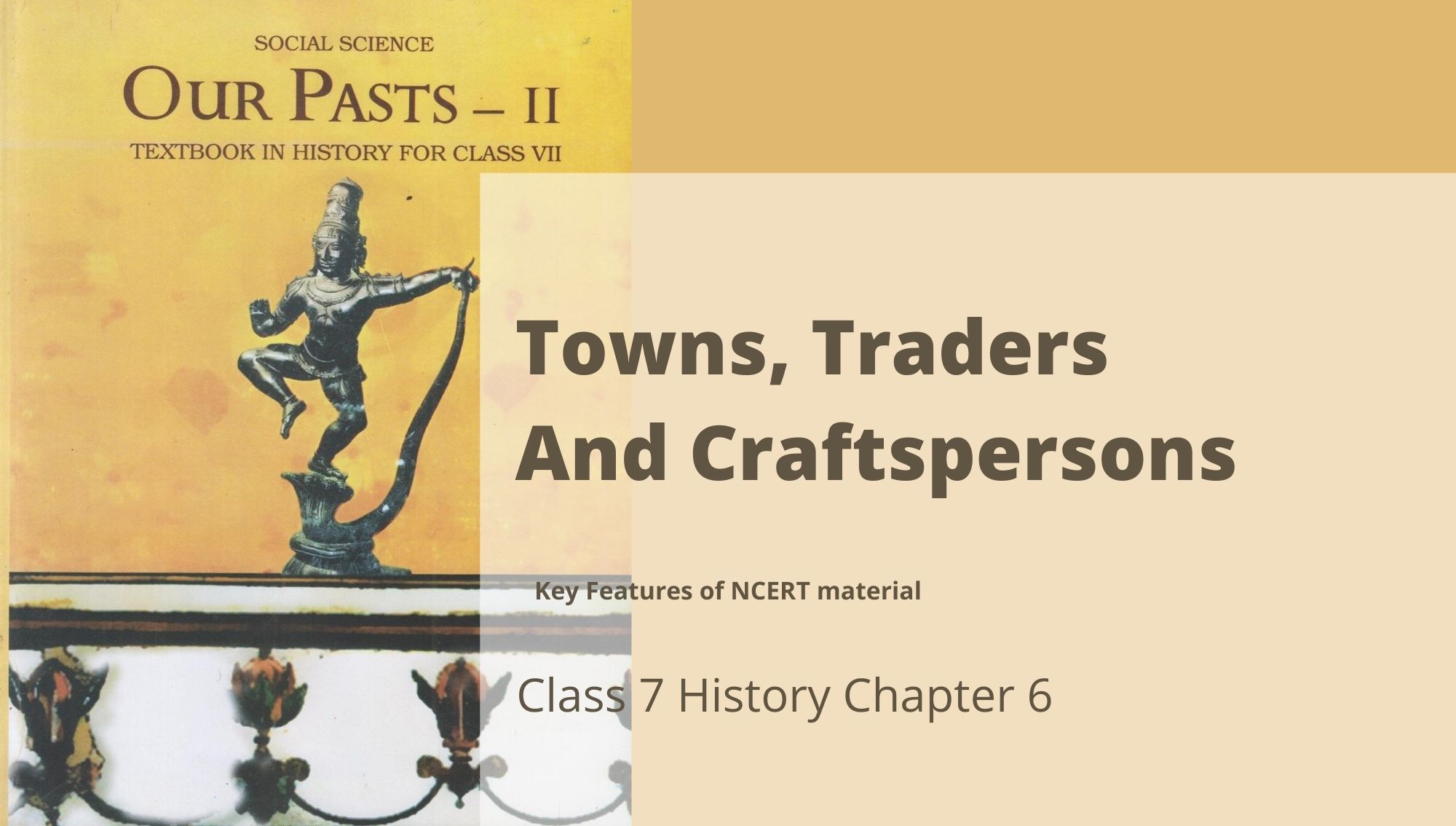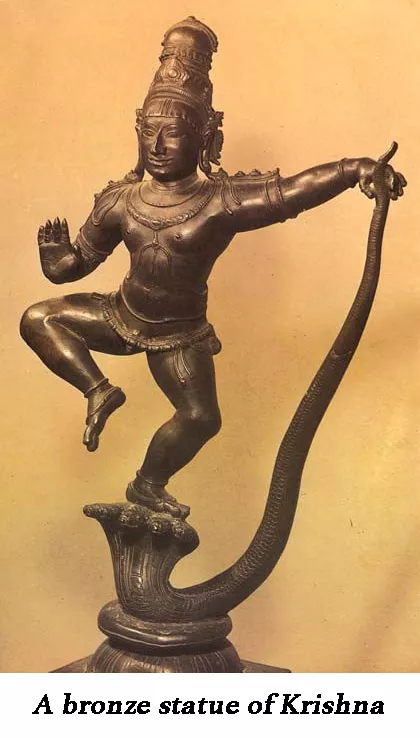Towns, Traders And Craftspersons: Class 7 History NCERT Chapter 6

Key Features of NCERT Material for Class 7 History Chapter 6 – Towns, Traders, and Craftspersons
In the previous chapter 5 of NCERT class 7 history, we studied about the powerful Mughal empire and how Mughals created and expanded an empire and accomplished in a short period of time. In chapter 6 of History NCERT book: Towns Traders And Craftspersons, you will learn about court towns, trading towns, and managerial towns. You will also get to know about the craftwork of different towns.
Quick revision notes
One of the most fascinating parts of the medieval period in the seventeenth century was the growth of urbanization. In medieval India, there were three kinds of towns: temple town, administrative town, and a commercial town or a port town.
The Arabs, Turkish, and Afghans settled in numerous portions of the nation prompting the evolution of towns and cities.
Sources of Knowing about this period’s history
- The source of history is the explorers’ accounts.
- Monserrate, Flitch, Nicolo Cont, Domingo Paes, Abdul Razzaq Samarqandi and Thomas Roei have writings on the life of this period.
Court Towns
- A few of the significant court towns were Lahore, Agra, Fatehpur Sikri and Delhi.
- Akbar established the new capital Fatehpur Sikri.
- Delhi was known as Shahjahanabad and was established by Shah Jahan in 1639.
Port and Trading Towns
- A few towns were created as ports because of their vicinity to the seashore.
- Some significant ports were Surat, Cambay, Broach, Nagapattinam, Masulipatanam and so forth.
Managerial Towns
- A few towns were capital cities. They were administration centres.
- Thanjavur and Uraiyur were significant centres.
- Temple Towns and Pilgrimage Centers
- Temple towns were significant centres of urbanization and prompted the advancement of cities, economy, and society.
- Pilgrims gave tremendous donations to temples. This wealth was utilized by temples authorities to back their trade and banking.
- Significant temple towns were Bhillasvamin in Madhya Pradesh, Kanchipuram, Somnath in Gujarat, and Madurai

How Important was Bronze
- Bronze is an amalgamation of metals copper and tin.
- Chola rulers utilized this metal to make sculptures through the Tost wax’ method.
The Emergence of Small Towns
- Small towns started emerging in India from the eighth century. They emerged out of huge towns. They had a place called ‘mandapika’ where locals sold their produce.
- Similarly, there were market lanes, called ‘hatta’, loaded with shops.
- Numerous residents came to purchase nearby articles and sell items like horses, camphor, saffron, betel nut, salt, flavours and so on.
- Ordinarily, a Samanta was designated who fortified the royal residences and gave the right to gather taxes from traders, craftsmen, and so forth.
Name of Traders
- Numerous sorts of traders existed.
- Traders went in caravans by framing guilds.
- Trade was done all the time inside the peninsula and within South-east Asia and China.
- Some other significant traders were the Marwari, Chettiars, Baniyas, Banjaras, Muslim Bohras, and so forth.
Specialities in Towns
- Craftwork was well known by the name of Bidri in the area.
- The goldsmith, bronzesmith, blacksmith, carpenters and masons were all together called the ‘Panchalas’ or ‘Vishwakarma’.
- Some different crafts were cotton cleaning, dying and spinning.
- Surat in Gujarat was a well known cosmopolitan city. The surat’s materials were known for their gold laces known as zari and had a significant market in West Asia, Africa and Europe.
There were three kinds of medieval towns—a temple town, an administrative centre, and a trade town or a port town.
Thanjavur, the capital of the Cholas a thousand years back, rose as an administrative centre and also a temple town.
The perennial river Kaveri streams close to this delightful town. The popular Rajarajeshvara temple constructed by King Rajarja Chola lies here.
As Thanjavur was an administrative centre, Kings held courts in the mandapas, which were portions of royal residences, giving orders to their subordinates.
Temple towns signify a significant pattern of urbanization, the procedure by which urban communities create. – ‘
Rulers assembled temples to exhibit their devotion to different gods.
Significant temple towns were situated in Bhillasvamin in Madhya Pradesh, Kanchipuram and Madurai in Tamil Nadu, Somnath in Gujarat, and Tirupati in Andhra Pradesh.
Pilgrimage centres likewise formed into townships. For instance, Vrindavan in Uttar Pradesh and Tiruvannamalai in Tamil Nadu.
Small towns rose up out of big towns. They normally had a mandapika or mandi of later times where towns carried their produce to sell. They likewise had market roads called hatta or warmth of later occasions fixed with shops.
Various types of craftsmen, for example, potters, oil pressers, sugar producers, toddy creators, smiths, and so on likewise lived in these towns.
There were numerous sorts of traders. They formed guilds to secure their interests and travelled in caravans.
There were likewise communities like the Chettiars and the Marwari Oswal. Gujarati traders exchanged broadly with the ports of the Red Sea, Persian Gulf, East Africa, South-east Asia and China.
Indian spices, for example, pepper, cinnamon, nutmeg, and so forth turned out to be exceptionally well known in European homes. Indian cotton fabric was likewise in incredible interest. This inevitably attracted European traders to India.
The craftspersons of Bidar were extremely acclaimed. Their copper and silver works came to be known as Bidri.
The Panchalas or Vishwakarma community, composed of goldsmiths, bronzesmiths, blacksmiths, carpenters and masons contributed a great deal in the formation of temples.
The weavers, for example, the Saliyar or Kaikkolars additionally donated to temples.
Hampi was the capital of the Vijayanagara region. The architecture of Hampi was particular and different. It was busy with cultural and commercial activities during the 15-sixteenth century.
Moors, Chettis and agents of European merchants swarmed the markets of Hampi.
Temples were the centre of cultural activities.
Hampi fell into ruin following the loss of Vijayanagara in a battle in 1565 by the Deccani Sultans.
Surat in Gujarat was a well known cosmopolitan city. Individuals of all castes, creed and beliefs lived there.
Surat’s materials were known for their gold lace borders known as zari and had a market in West Asia, Africa and Europe.
The Kathiawad seths or Mahajan had enormous banking houses at Surat. The Surat hundis were popular and honoured in the distant markets of Cairo in Egypt, Basra in Iraq and Antwerp in Belgium.
Surat started to decrease towards the end of the seventeenth century.
The town of Masculipatnam was a centre point of intense activity in the seventeenth century. As it turned into the most notable port on the Andhra coast both the English and Dutch East India Companies tried to control it.
The Qutb Shahi leaders of Golconda chose to forestall all the attempts of the East India Companies. So, the furious rivalry among different trader groups made the city crowded and prosperous. In any case, Golconda was taken over by Aurangzeb in 1686-1687.
This made the European Companies search for other options. The Company dealers moved to Bombay, Calcutta and Madras. This caused a decrease of Masulipatnam in the eighteenth century.
English became the most powerful commercial and political power in the subcontinent.
Indian textiles were in incredible interest in Europe and West Asia. An ever-increasing number of individuals started to indulge themselves in the crafts of weaving, bleaching, dyeing, and so on. However, the craftspersons were not any more autonomous. They started to work at an arrangement of advances which implied that they needed to weave fabric which was vowed to European agents.
Bombay, Calcutta and Madras became significant urban communities in the eighteenth century.
The Europeans built up Black Towns in these new urban communities and traders and craftsmen were made to move there.
The ‘white’ rulers took over the superior living arrangements of Fort St George in Madras or Fort St William in Calcutta.
Administrative town:
A town from where the administration is done
Temple town:
A town with a number of well-known temples.
Commercial town:
A town which is the centre of purchase and sells products.
Emporium:
A place where products from various production centres are bought and sold.
Hundi:
A deposit made by a person is not recorded. The amount deposited can be claimed in some other place by introducing the record of the deposit.
Factor:
The official trader of the East India Company.
Sthapatis:
Sculptors who made mesmerizing bronze idols and ornamental bell metal lamps.
Pilgrimage Centres:
Religious spots where people used to go for pilgrimage.
1336: Vijayanagara Empire was established.
1565: Vijayanagara Empire lost in a battle.
1704: Murshidabad turned into the capital of Bengal.
At the end of the 17th Century: Surat began to deteriorate.
In the 17th Century: The town of Masalipatnam was a hub of intense activity.
The 18th century: Bombay, Madras and Calcutta started rising.



